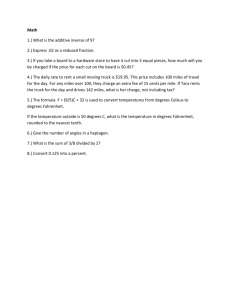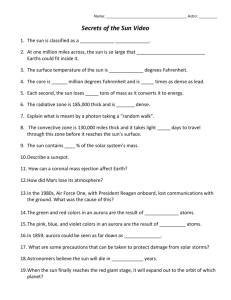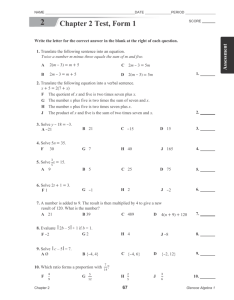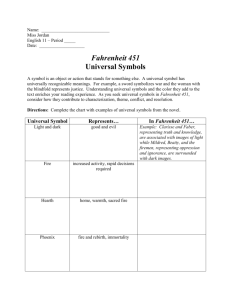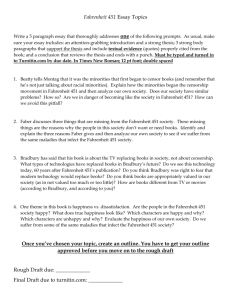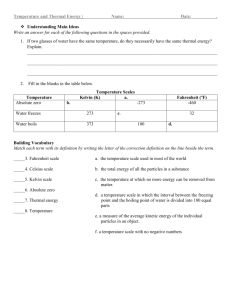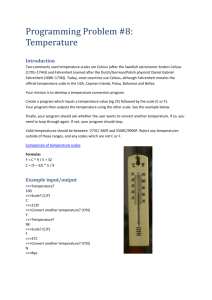File
advertisement
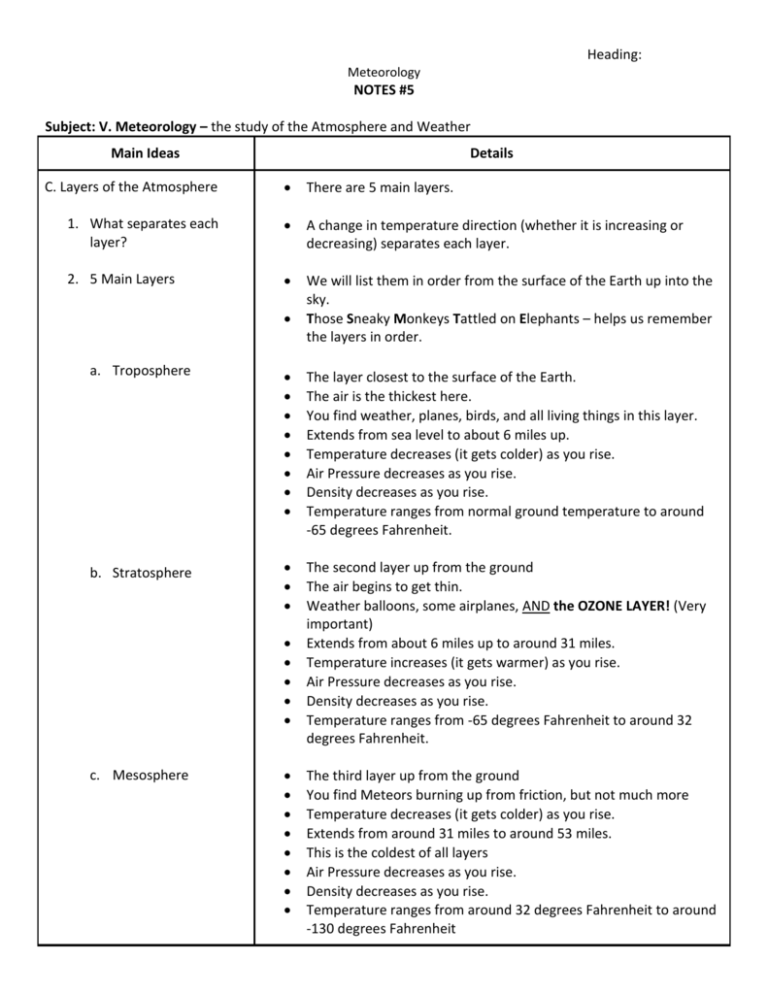
Heading: Meteorology NOTES #5 Subject: V. Meteorology – the study of the Atmosphere and Weather Main Ideas Details C. Layers of the Atmosphere There are 5 main layers. 1. What separates each layer? A change in temperature direction (whether it is increasing or decreasing) separates each layer. 2. 5 Main Layers We will list them in order from the surface of the Earth up into the sky. Those Sneaky Monkeys Tattled on Elephants – helps us remember the layers in order. a. Troposphere b. Stratosphere The layer closest to the surface of the Earth. The air is the thickest here. You find weather, planes, birds, and all living things in this layer. Extends from sea level to about 6 miles up. Temperature decreases (it gets colder) as you rise. Air Pressure decreases as you rise. Density decreases as you rise. Temperature ranges from normal ground temperature to around -65 degrees Fahrenheit. The second layer up from the ground The air begins to get thin. Weather balloons, some airplanes, AND the OZONE LAYER! (Very important) Extends from about 6 miles up to around 31 miles. Temperature increases (it gets warmer) as you rise. Air Pressure decreases as you rise. Density decreases as you rise. Temperature ranges from -65 degrees Fahrenheit to around 32 degrees Fahrenheit. c. Mesosphere The third layer up from the ground You find Meteors burning up from friction, but not much more Temperature decreases (it gets colder) as you rise. Extends from around 31 miles to around 53 miles. This is the coldest of all layers Air Pressure decreases as you rise. Density decreases as you rise. Temperature ranges from around 32 degrees Fahrenheit to around -130 degrees Fahrenheit d. Thermosphere e. Exosphere Summary: The fourth layer up from the ground You find the International Space Station, space shuttles, and the Aurora Borealis (Northern Lights) and Aurora Australis (Southern Lights Temperature increases (it gets hotter) as you rise. This is the hottest of all layers Extends from around 53 miles to 600 miles. Air Pressure decreases as you rise. Density decreases as you rise. Temperature ranges from around -130 degrees Fahrenheit to around 3,600 degrees Fahrenheit. This is the layer where molecules escape into space Considered Outer Space Not much of importance is found here Not really a clear end to it. Air Pressure decreases as you rise. Density decreases as you rise. Temperature really hot, but would feel really cold.
